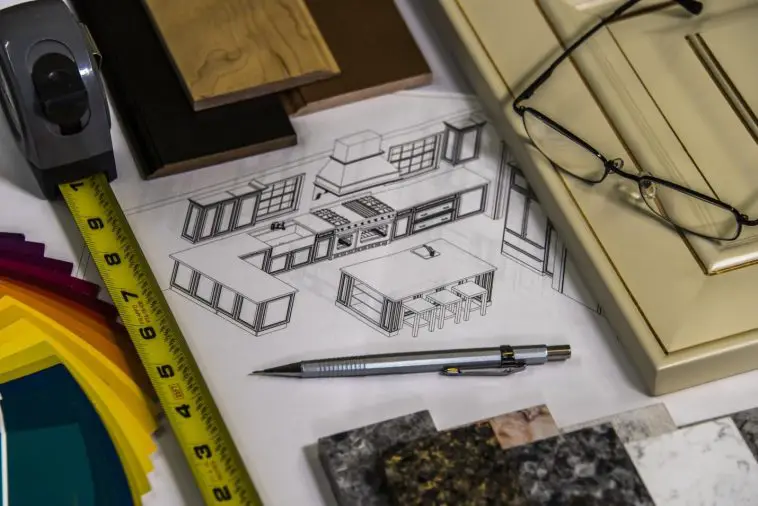The beauty of investing in the housing market is the simple ability to turn where you live into an investment, with a small caveat. This rule is only applicable when you can improve the house’s market value as you live in it. And one of the best ways to increase your return-on-investment (ROI) is by implementing many home remodeling ideas and renovations.
Yet, you’ll want to keep a steady focus. Instead of becoming lost in a sea of home remodeling ideas and fantasies, consider which endeavors have the most significant ROI to guarantee that you not only enhance your space for you and your family but also for future purchasers. Keep on reading for our full breakdown of the seven key home remodeling ideas that can give you the biggest bang for your buck.
1. Home Remodeling Ideas 101: Start With a Kitchen Remodel
When it comes to improving the value of your house, there is no better place to start than the kitchen. General estimates show that the return on investment for kitchen remodeling ranges from 53% to 72%, depending on the project’s scope, the materials used, and the location of the project.
Remember to stay within your renovation budget and keep the kitchen functional and relevant to the rest of the home when contemplating a kitchen improvement.
A contemporary restaurant-style kitchen with industrial equipment would not seem right in a property with a lot of old-fashioned charm, which might put off potential buyers.
2. Modernize the Lighting in the Dining Area
The new multipurpose space is the kitchen. In addition to serving as a workspace for adults and children, a meeting place for family dinners and dinner parties, and so on, kitchen islands serve many purposes.
You may create a unique solution to fit your family’s demands and the limitations of the existing wiring, even though kitchen lighting plays an integral part in establishing the tone for these duties.
3. Remodeling the Bathroom
Renovating your bathroom is another option to raise the value of your property and make it more desirable to potential purchasers later on.
Adding a bathroom to your house is another possibility, particularly if you have one at the moment. You’ll love the convenience of having numerous bathrooms in your new home, which is a desirable item in the real estate market.
Adding an ensuite to a master bedroom or converting a closet or other underused space into a half-bath on the main level are two of the most common methods to add a bathroom. Additions like bathrooms and master suites may rapidly spiral out of control, and they may not increase the value of the property when it comes time to sell.
4. Making Use of Unused Space
Basements, attics, and bonus rooms are all examples of unfinished spaces that you may utilize in many houses.
If you’re a homeowner and not using that room, you’re wasting your money. The more space you can use, the more enticing your house will be to prospective purchasers.
As a bonus, it’s usually less costly than expanding your house.
5. Revamping Your Outdoor Area
The value of your house will rise as you improve the usability and accessibility of your outside area. Decks and patios may have an ROI of more than 64% depending on the materials used, such as wood or composite decking.
Lower decks and patios made of stone or brick are other alternatives, and if you’re handy, they might be outstanding DIY projects.
A low-cost strategy to boost the appearance of your house to potential buyers and the overall value of your property is to spruce up your existing outside buildings. Repair or replace any decaying boards or broken pavers, and remove peeling paint and stain. You may need to pressure wash and refinish your deck or patio if you already have one installed.
You can also change your home exterior’s look by getting factory direct siding.
Enhance Your Deck With Outdoor Lighting
Install low-voltage lighting systems, which are often used in landscape lighting, may seem to be a daunting task for the untrained DIYer. Additionally, the increased visibility will increase your safety if you make your deck the focal point of your boat.
Since low-voltage systems employ standard GFCI receptacles, they are less hazardous than regular domestic wiring. Outdoor wires provide electricity to the fixtures after converting from 120 V to 12 V.
6. A Smart Home That’s Energy-Efficient
There are several advantages to using energy-efficient equipment and construction materials. In addition, to save money on utility bills, they may significantly lessen the environmental effect of your house. Consider the following projects:
- Install solar panels
- Invest in a smart thermostat
- Purchase Energy Star appliances
- Improve insulation
- Swap out poorly insulated exterior doors
- Replace old windows
With the help of federal and state tax credits, you can reap the benefits of these energy-efficient renovations in more ways than one.
A professional home energy audit may help you find out how to make your house more energy-efficient. In many cases, gas and electricity companies provide assessments that give you an energy score and advice on how to improve your home’s efficiency.
7. Keeping Your House in Compliance with Local Codes
Depending on its age, you may do specific home repair tasks to put your house in line with current building requirements.
For renovations like this, older properties that haven’t been upgraded in the past are the most significant candidates for the work. Even though they may be costly, they’re typically well worth it since they increase the value of your home and make it safer and more pleasant for you and any future occupants to live in as well as future inhabitants.
Remodeling Your Home: Increase Your Home’s Value
The U.S.-based real estate market can genuinely help you build your wealth. We hope that our guide has highlighted the seven main home remodeling ideas that you can start planning for this quarter.
But, building your real estate knowledge can’t be done overnight. You should check our finance and real estate section for all our other explainers and strategies.




